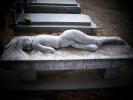By registering with our site you will have full instant access to:
268,000 posts on every subject imaginable contributed by 1000's of members worldwide.
25000 photos and videos mainly relating to the British Merchant Navy.
Members experienced in research to help you find out about friends and relatives who served.
The camaraderie of 1000's of ex Merchant Seamen who use the site for recreation & nostalgia.
Here we are all equal whether ex Deck Boy or Commodore of the Fleet.
A wealth of experience and expertise from all departments spanning 70+ years.
It is simple to register and membership is absolutely free.
N.B. If you are going to be requesting help from one of the forums with finding historical details of a relative
please include as much information as possible to help members assist you. We certainly need full names,
date and place of birth / death where possible plus any other details you have such as discharge book numbers etc.
Please post all questions onto the appropriate forum
As I feel there are quite a few on here that have NOT updated their Email addresses, can you please do so. It is of importance that your Email is current, so as we can contact you if applicable . Send me the details in my Private Message Box.
Thank You Doc Vernon
Please log in with your username and password
-
23rd October 2009, 03:55 PM
#11
 neville
neville
I did the maiden voyage on the Oriana , and had over 1200 crew and 2200 passengers, even the ships of today have more passengers but I think they have much less crew.

-
24th October 2009, 05:24 AM
#12

Neville a ruise ship today with capacity for 2,000 bloods would only have a crew of about 450. How times have changed.


Happy daze John in Oz.
Life is too short to blend in.
John Strange R737787
World Traveller

-
24th October 2009, 03:51 PM
#13
 Crew sizes
Crew sizes
Hi all,
The dual certification is allowed in STCW ninety something, I cant remember the date. It is the Safety training and certification of the watch-keepers.
In the HND course which was followed at Glasgow for both Bridge and Engine a lot of the subjects were common. Mathematics, Physics, Naval architecture, some partially common, electrics and electronics and, radio,radar. It left specific subjects such as Maintenance engineering, navigation, ship handling, Coll Regs,
bridge and engine room watch keeping not common. This left the dual apprentice with some remedial subjects but a long way from all of them. A mix of sea time was necessary and I think the extra was three months but I am not sure now.
The main policy of the GovUK at the time was that if a ship needed a second mate and a third engineer one man could not replace the two. What was allowed was if the 3/e signed off the dual qualified 2/o could replace him but a new qualified 2/o was required or vice verso. This put the plans of the shipping companies up the spout. The main thrust was off course to replace two men with one.
I am now retired and I cant say if this is still so.
Its a fallacy that there is a great difference between both departments!!! When both Departments were in the early months severe remedial work was required due to lack of Secondary Education. Nobody will admit to having it in later years in the industry. Oh how they forget.
regards
jimmy
Last edited by jimmys; 24th October 2009 at 03:54 PM.
-
18th August 2010, 05:28 AM
#14
 Blocked
Blocked
Evenlighting you are now blocked from posting futher!
Admin Asst/Moderator
 Senior Site Moderator-Member and Friend of this Website
Senior Site Moderator-Member and Friend of this Website
R697530
-
18th August 2010, 10:03 AM
#15

If I remember correctly , I think BP did some experiments with this in the early 1970's , and I don't think it was very successful . But I expect some of the old BP guys may remember it better than I can
Rob Page R855150 - British & Commonwealth Shipping ( 1965 - 1973 ) Gulf Oil -( 1973 - 1975 ) Sealink ( 1975 - 1986 ) 

Similar Threads
-
By Tony Wilding in forum Merchant Navy General Postings
Replies: 2
Last Post: 1st July 2017, 05:09 PM
-
By Doc Vernon in forum Union Castle
Replies: 2
Last Post: 21st December 2010, 06:21 AM
Tags for this Thread
 Posting Permissions
Posting Permissions
- You may not post new threads
- You may not post replies
- You may not post attachments
- You may not edit your posts
-
Forum Rules
